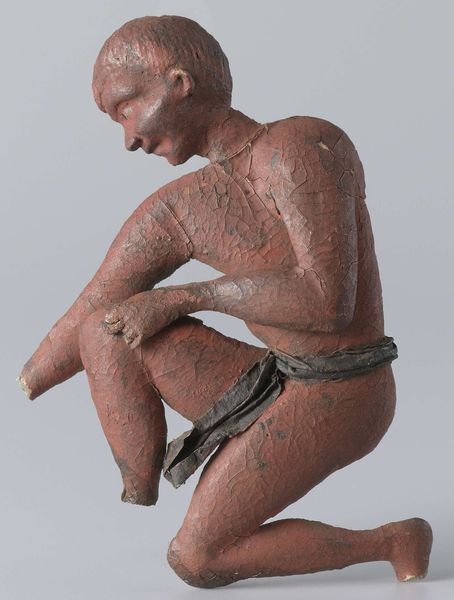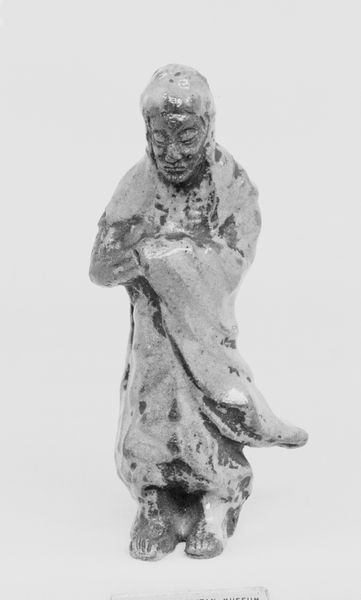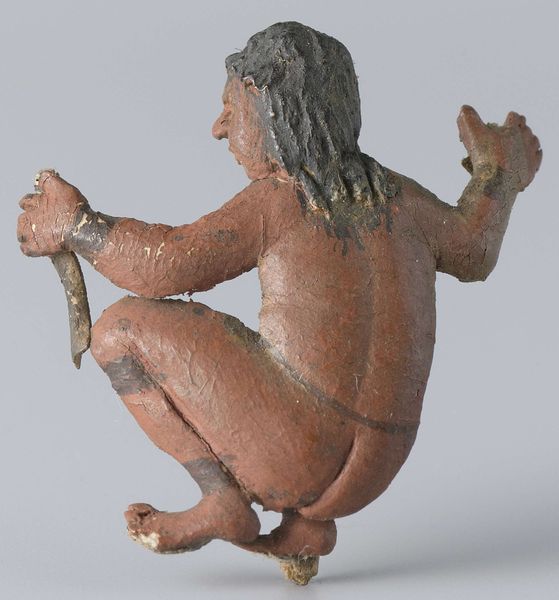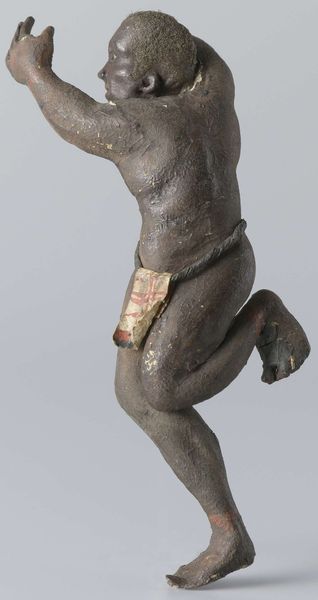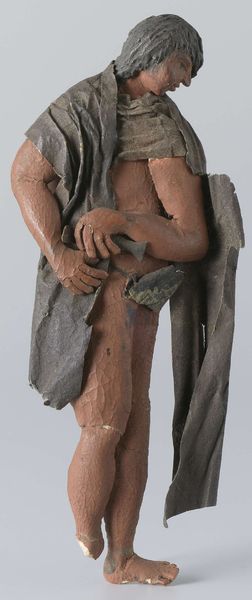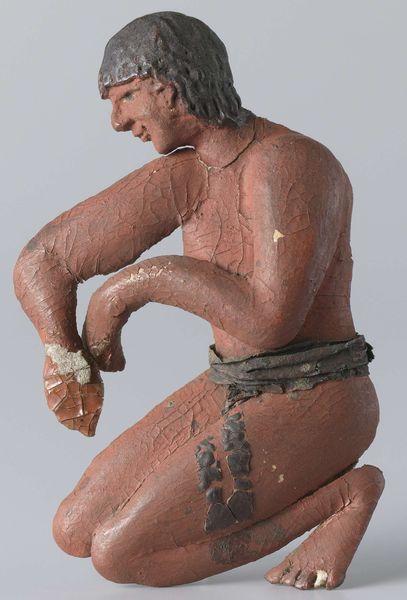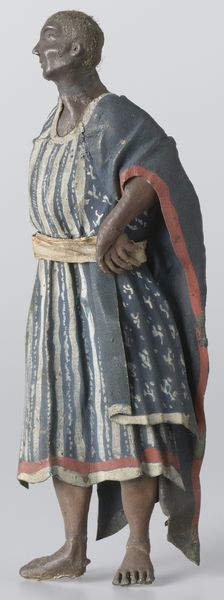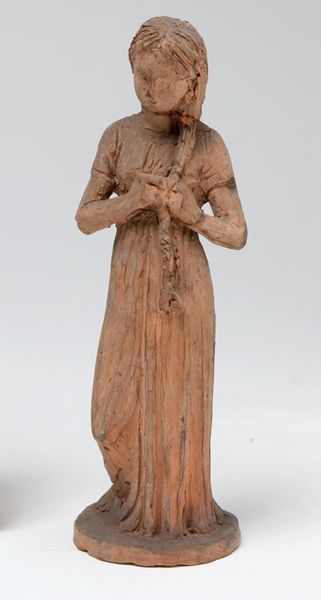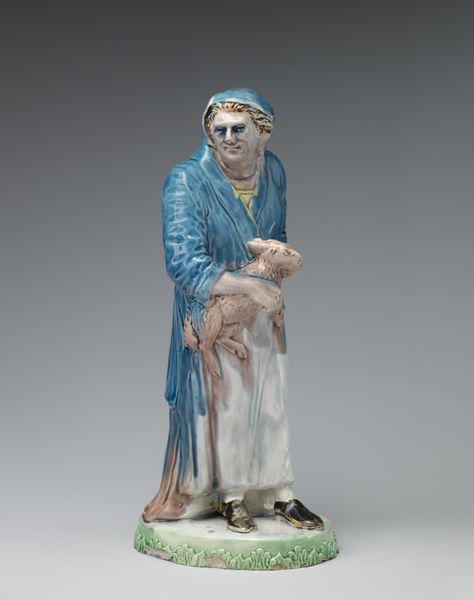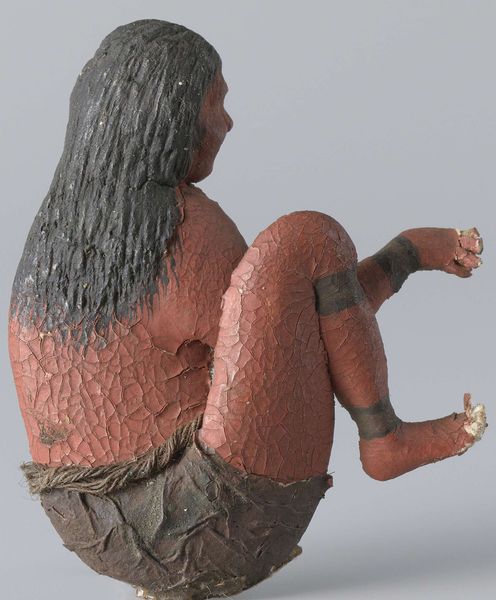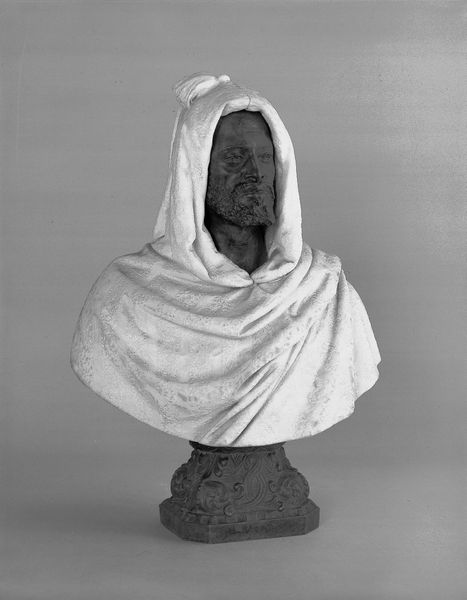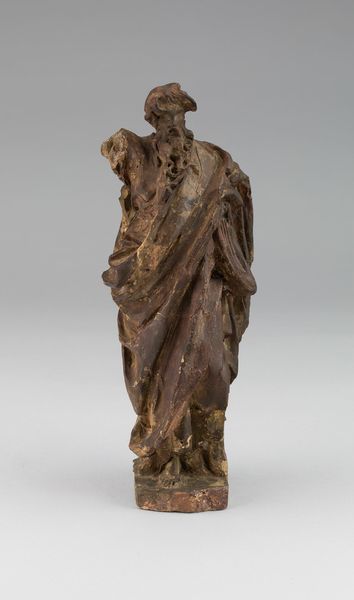
sculpture, wood
#
portrait
#
sculpture
#
figuration
#
sculpture
#
wood
Dimensions: height 6.5 cm, width 4.3 cm
Copyright: Rijks Museum: Open Domain
This small sculpture, "Een zittende Creool", was made by Gerrit Schouten in the late 18th or early 19th century. The primary material here is painted paper mache. Schouten, who lived in Suriname, was known for these kinds of ethnographic figures. The process began with creating a mold, probably in clay, and then pressing dampened paper into it layer by layer. Once dried, the figure would have been carefully painted and detailed. The inherent qualities of paper mache – its lightness, its capacity to be molded, and its ability to take paint – all contribute to the work’s character. In this case, the smooth surface is meant to simulate skin. Schouten was engaging with traditions of both sculpture and painting. But he was also documenting the population around him, creating a valuable record of a particular time and place. By considering the social context and the making process, we gain a deeper appreciation for the complex meanings embedded in this small-scale artwork.
Comments
No comments
Be the first to comment and join the conversation on the ultimate creative platform.

